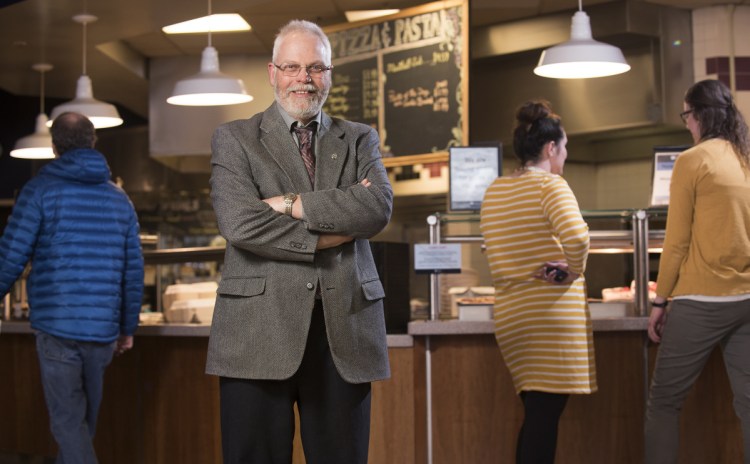When the University of Maine System signed a new food-service contract in 2016 prioritizing local food, it sent a strong message about supporting Maine agriculture. In following through on the promise of that contract, the UMaine System has sent another message, this time about the potential for growth in an industry everyone should be excited about.
The 10-year contract covered all of the system’s campuses except the flagship in Orono, which runs under a separate deal. It set the goal of purchasing 20 percent of all food from local growers and producers by 2020.
It seemed like a real challenge for an institution that has to feed so many people, particularly during the winter months, when Maine produce is not very easy to get. After all, when the idea of increasing the use of local food at state institutions had been brought up in the past, opponents wondered if it was even realistic.
But last month, university officials announced that the system was already at 23 percent. As of November 2017, it had spent $770,000 on local food, and for this year it expects to buy $1.5 million worth of Maine food from 134 different producers.
By working with growers and producers they already knew, and by seeking out others who could meet their needs, food-service officials throughout the system – including in Orono, which by itself made great strides in the use of local food in the last two years – they replaced food from out of state with Maine-made offerings, and in the process provided a new market to many local growers.
They also showed it is possible to do something like this on a wide scale. As state agriculture Commissioner Walt Whitcomb said in announcing the good news, it’s proof that “food operations of all sizes and locations can put local food on the menu.”
Policymakers should pay attention, because there is more room to grow. University systems elsewhere have set much higher goals, and are working toward them. Some municipal school systems here in Maine are already using a higher percentage of local food than the university system.
It’s clear it can be done, but that doesn’t mean there aren’t challenges. Fortunately, there are a number of individuals and groups working on overcoming them.
In general, most of the challenges – or opportunities, if you want to be sunny about it – have to do with connecting Maine’s many growers with markets, in order to either scale up what they are doing or point them in the direction of something different and perhaps more sustainable.
For one, there is a need to increase processing here in Maine in order to extend the lives of seasonal products and to turn Maine-grown food into more profitable value-added products. There are opportunities in growing markets for crops not often associated with Maine, such as broccoli, which is used by some farmers as a rotational crop.
Many of these challenges and opportunities were brought to light in the Maine Food Strategy report released in 2016. Revisiting that report and others, it is clear how interdependent Maine growers, producers and suppliers are – they all need each other to form a strong agricultural economy. Yet the system is so disjointed in spots that they aren’t always connected in the most efficient and effective ways, if they are connected at all.
Good public policy can help ease those connections. Policymakers should look at the success in the University of Maine System, and wonder how they get more Maine food on everyone’s plates.
Send questions/comments to the editors.



Success. Please wait for the page to reload. If the page does not reload within 5 seconds, please refresh the page.
Enter your email and password to access comments.
Hi, to comment on stories you must . This profile is in addition to your subscription and website login.
Already have a commenting profile? .
Invalid username/password.
Please check your email to confirm and complete your registration.
Only subscribers are eligible to post comments. Please subscribe or login first for digital access. Here’s why.
Use the form below to reset your password. When you've submitted your account email, we will send an email with a reset code.